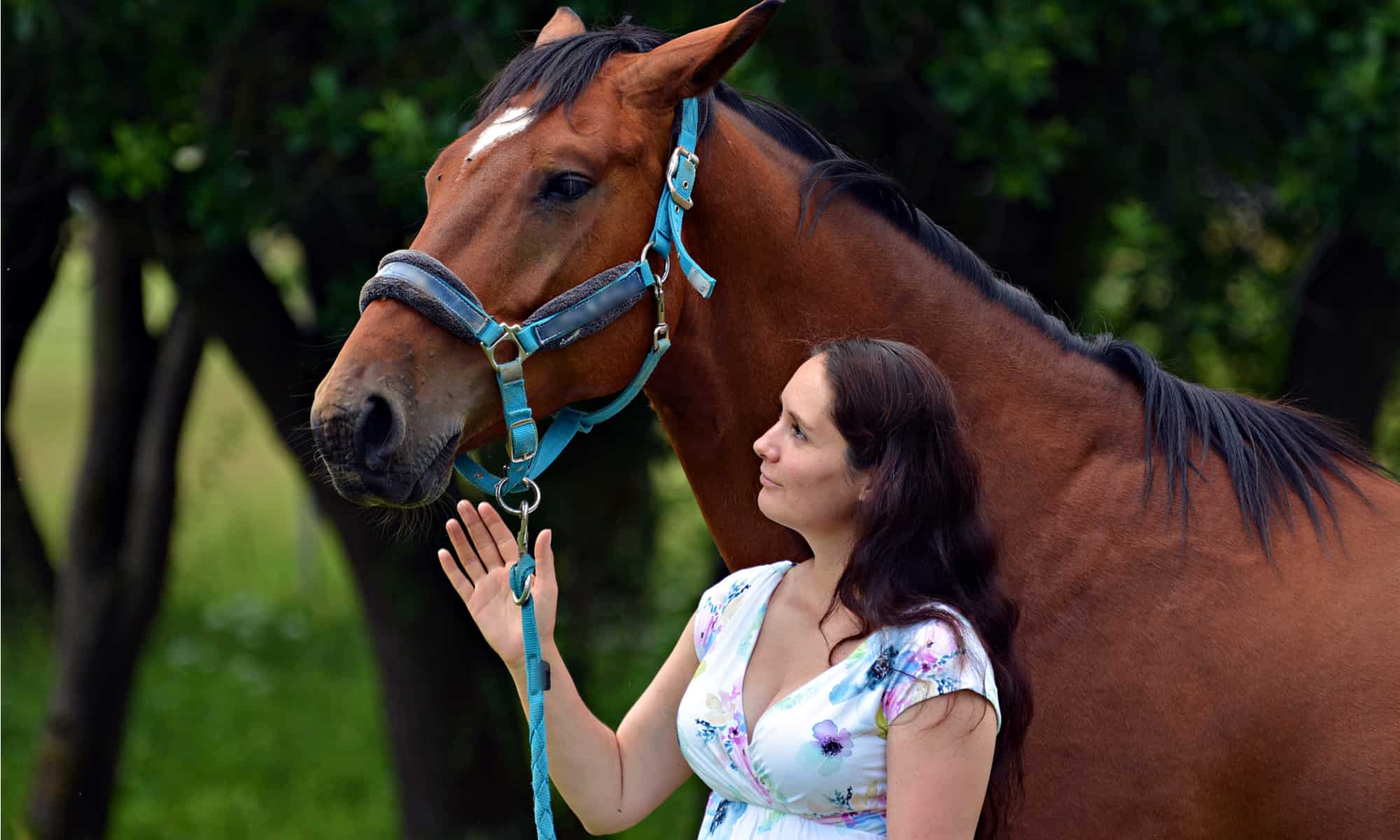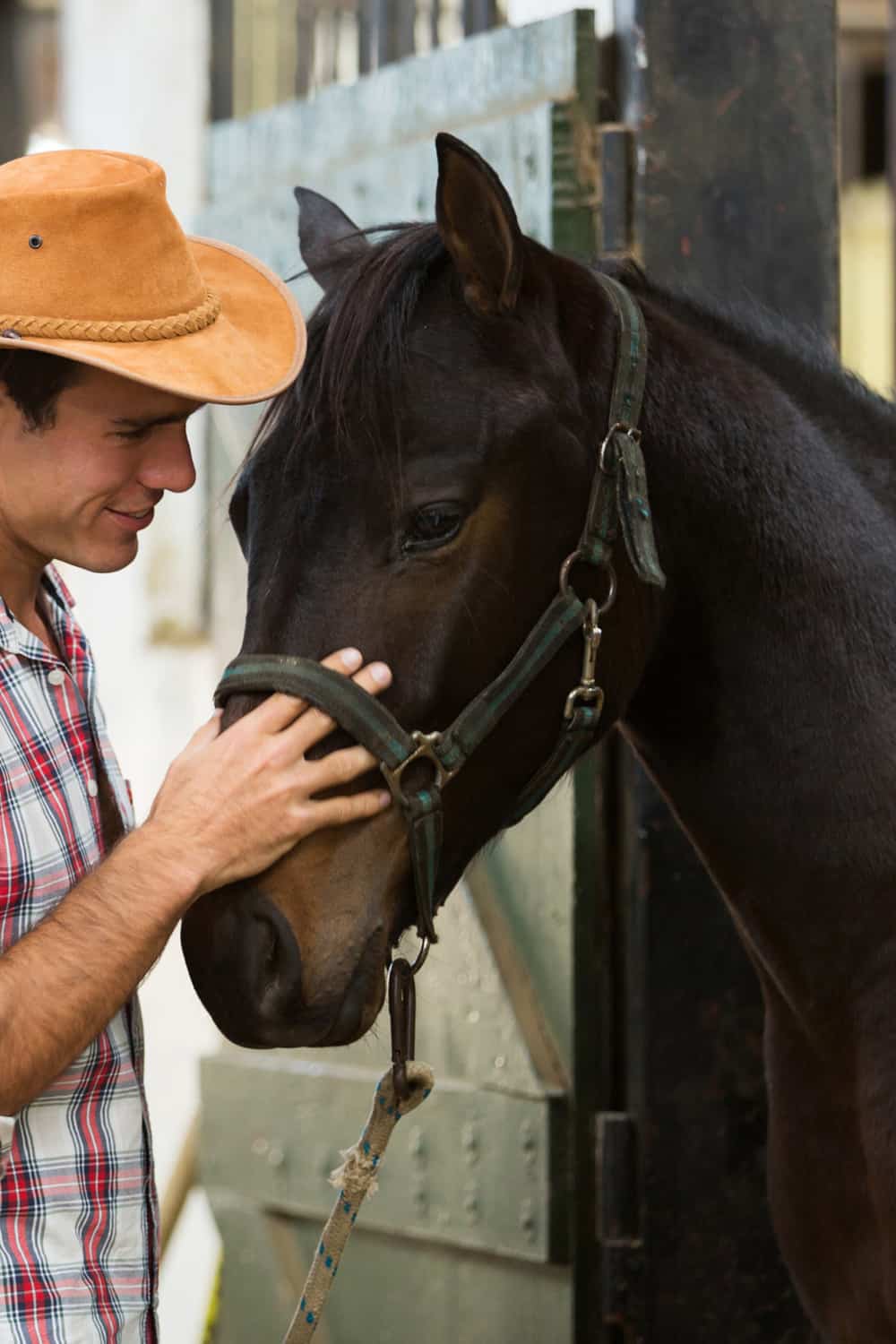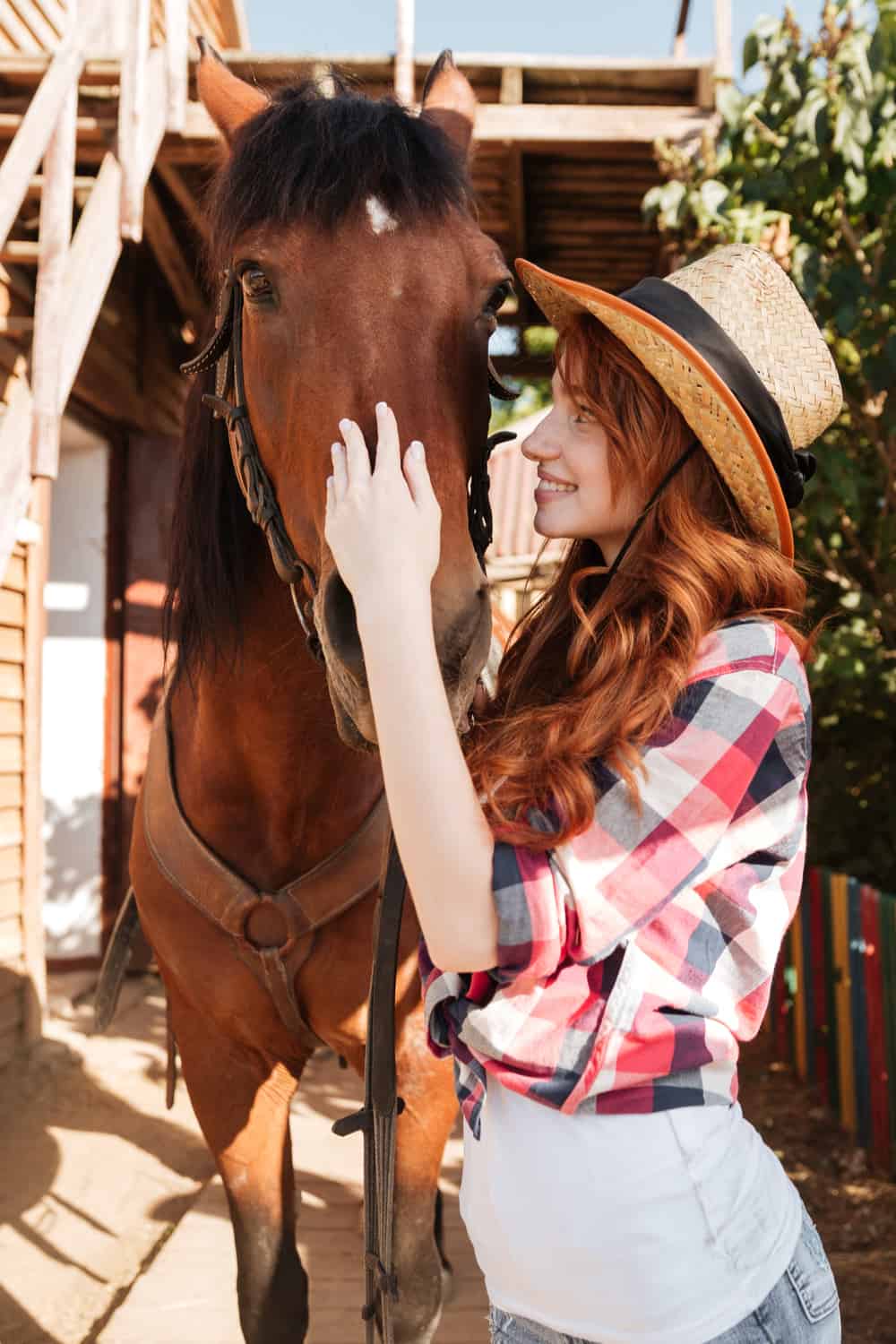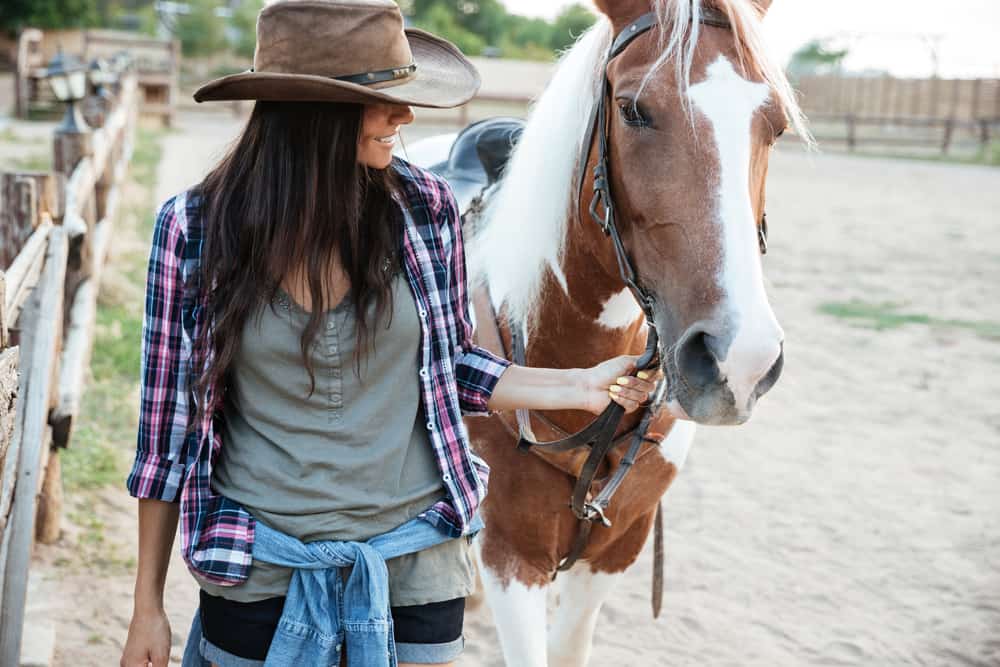Are you struggling to train an unruly horse, and someone in your circle recommended a horse whisperer? What the heck is that? Is it some kind of object, or maybe a wizard? Despite the mystical sound of the term, you don’t have to look for someone with magical abilities. So, what is a horse whisperer?
In a nutshell, it is a horse trainer who uses modern equine psychology to assess the motives and address the needs and desires of a horse. In fact, horse whisperers are also known as natural horsemanship trainers. Let’s find out more about them.
What Is a Horse Whisperer?
A horse whisperer is an expert who uses horse whispering techniques to create a sound basis of cooperation between human and beast.
Contrary to popular belief, horse whispering has little to do with quiet talking and more with observation and non-verbal communication.
A horse whisperer’s main purpose is to establish a connection with the horse through the use of adequate body language. The end goal is to make training easier or help the horse overcome trauma.
What Is a Horse Whisperer’s Role?
Horse whisperers have two important roles, that of training young colts and fillies – especially horses bred for racing purposes – and that of helping horses of all ages overcome trauma.
The horse whisperer’s role in training young horses
Many horse owners and even jockeys believe that young horses are easy to train. However, improper training can lead to behavioral errors that, once ingrained, can be hard to correct. These behavioral problems can include:
- Aggression towards humans and other horses
- Fears and phobias
- Performance problems
- Eating disorders
- Sexual behavior problems
With the help of non-verbal communication, horse whisperers can train young horses while preventing bad behaviors from developing. Similarly, a horse whisperer can also help correct these behaviors in previously trained horses. To do so, horse whisperers generally use positive reinforcement techniques alongside proper body language.
The horse whisperer’s role in helping horses overcome trauma
Aside from training, a natural horsemanship trainer can also help horses overcome trauma. For instance, if a horse refuses to be saddled or develops aggression towards humans or other animals after an accident, the horse whisperer can understand the problem from the horse’s standpoint and adopt training techniques that can help the horse overcome its anxieties and trust people again.
If trauma is caused by improper training – for instance, because of punishment or negative reinforcement – a professional horse whisperer can also help improve the relationship between the horse and its owner or regular trainer.
In the case of physical trauma, horse whisperers work closely with veterinarians and osteopaths, aiding the horse during the rehabilitation process.
Typical Equine Signals Horse Whisperers Recognize
As mentioned above, horse whisperers can interpret a horse’s body language to determine what’s wrong with the animal. Here are some of the things a trained professional can recognize:
- Illness and pain: A horse’s body language is the first indicator that the animal might be ill or feel pain. Not only will an ill horse stand off from the group, but it might also show guarding. For instance, a horse that feels stomach pain may bite its abdomen or lay down only to stand up again a few minutes later. A horse in pain will also keep its head low, maintain a rigid stance, and stare to a fixed point.
- Stress and anxiety: Horses that feel stressed or anxious also display a specific behavior. The first indicator is a stiff stance with wide-open eyes, flaring nostrils, forward-pointing ears, and a high tail. The horse may also lick or chew involuntarily.
- Depression: Different from stress and anxiety, depression is another mental illness that can affect horses of all ages. A depressed horse will often maintain a fixed stance with the body weight shifted to the front, and the neck parallel to the ground. Most depressed horses prefer to face a wall or other obstacle and generally ignore people and other horses.
- Discontent: Like people, horses can dislike certain things, including grooming or being saddled. Most horses show their discontent by swishing their tails and shaking their heads. Negative reinforcement in these cases can lead to more serious behavioral problems.
- Content: While horse whisperers can notice a horse’s discontent, they can also figure out when the animal is happy. Horses use facial expressions to communicate their positive emotions, including a so-called “equine smile” in which they stretch their upper lips while half-closing their eyes.
How Do Horse Whisperers Build Trust?
Whether they are training a young horse or helping an abused or injured horse overcome trauma, horse whisperers use several techniques to build trust with the animals they train:
- Appropriate body language: A horse will never feel comfortable around you if you’re scared or aggressive. When first approaching a horse, professional trainers use a submissive body language and avoid direct eye contact. Keeping the eyes and head low will help the horse understand that you are not a threat.
- Appropriate mindset: Just like your body language, your mindset matters. Approach the horse calmly and confidently. If things get too frustrating during training, it is advisable to walk away and calm down before approaching the horse again.
- Consistency: Horse whisperers use the same approach no matter where the activity is. One of the biggest mistakes is to treat the horse in a way when saddling it and in another when leading it to grooming or when feeding it. You should always approach the horse in the same way if you want to build trust.
- Setting boundaries: While you should display a submissive behavior when approaching the horse, you should still set boundaries. Define a clear personal space and correct the horse as soon as it invades your space. Only allow the horse to invade your personal space when invited to do so.
- Positive reinforcement: Training a horse requires a lot of patience, but you should never punish the animal. Instead of punishing bad behaviors, you should encourage good ones with positive reinforcement such as treats or a pat.
- Emotional support: A horse whisperer’s secret is the calm approach to any situation. Horses are fearful creatures, so you must be able to manage any situation with utmost calmness. As long as you’re able to transmit confidence, your horse will relax and trust you.
How to Become a Horse Whisperer?
If you’d like to embrace horse whispering, here’s what to do.
1. Learn as much as you can about horses
Horse whisperers are trainers that put the horses’ needs before their own; thus, you should take your time to learn as much as possible about horses. In addition to individual study, you should join a course, become a horse trainer apprentice, or get a specialized horse training diploma.
2. Start working with horses
Before starting to train a horse, you should familiarize yourself with the animals and the environment. The simplest way to start is by feeding the horses. Not only will you be able to familiarize yourself with them, but the horses will also become accustomed to you.
Next, learn how to groom and care for the horses. Grooming is a crucial part of understanding and developing bonds with a horse.
3. Learn how to communicate with horses
Knowing everything about horse behavior is only the first step to becoming a horse whisperer; you should also learn how to use your body language to communicate effectively with the animals. Learn how to approach a horse, how to talk to it, and what methods to use for effective training. The only way to do this is by watching and learning from professional horse whisperers.
FAQs
Is horse whispering a real profession?
Although horse whispering doesn’t appear on any list of professions, a horse whisperer is a trainer specialized in horse psychology and communication. Thus, horse whispering is a real thing.
Where does the term horse whisperer come from?
Horse whispering is a term dating back to the nineteenth century. The name became popular due to Daniel Sullivan, an Irish natural horsemanship trainer who became famous for his ability to rehabilitate horses who suffered abuse or trauma.
Who is the best natural horsemanship trainer?
It is hard to say who is the best natural horsemanship trainer, but among the most famous we can mention Pat Parelli, Buck Brannaman, Monty Roberts, Carl Hester, and Stacy Westfall
Summary
A horse whisperer is an important figure capable of understanding horse behavior and correct bad conduct. Also called natural horsemanship trainers, horse whisperers often work with young, unruly horses or horses who suffered abuse or trauma.
By using body language and horse psychology, these trainers manage to educate colts and fillies, help horses during a rehabilitation process, and even cure mental health issues, including stress, anxiety, depression, and phobias.
Becoming a horse whisperer could be challenging, but if you love horses and dream of becoming a trainer, learning the horse whispering techniques will undeniably help you achieve professional success.











